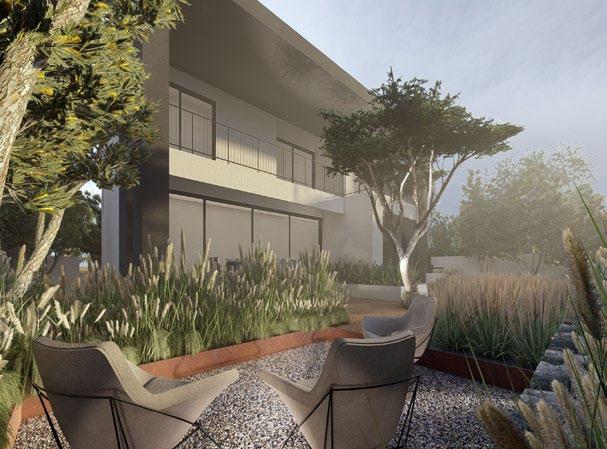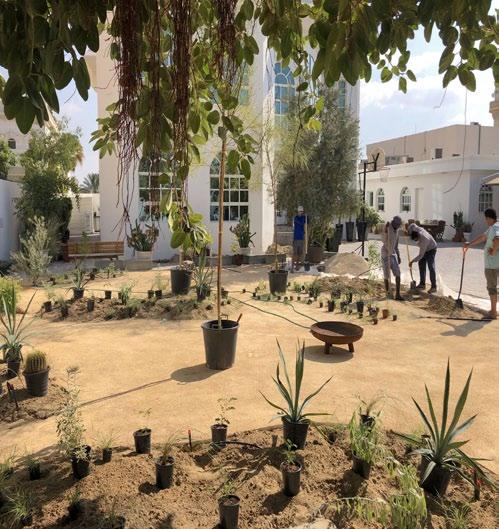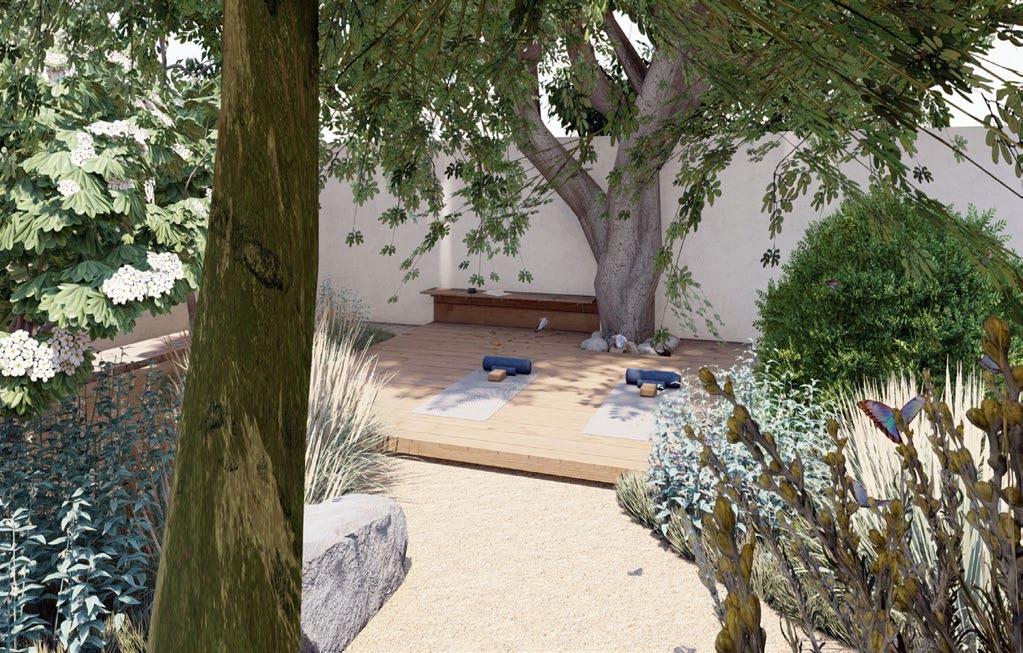
6 minute read
Cold Soup
By Will Bennett Founder & Chief Nature Nerd, WILDEN Design COLD
SOUP
Advertisement
Why Gardens Will Save the Planet
A crisp, icy, tomato gazpacho; the greatest meal of my life. As far as profound food memories go, I don’t carry a huge back catalogue, which might seem strange as an ex-chef and resident of Dubai; after all this foodie hub is awash with fine dining ‘experiences’. It’s more that they all get mashed (like an overpriced avocado breakfast) into one fuzzy memory. I can barely remember the good sourdough from the sour do-not, so how is it that a bowl of cold tomato soup was the greatest thing on earth?
I was enjoying this meal on an organic farm called Babylonstoren in Stellenbosch, South Africa, where I’d walked through the orchards and allotments on my way to the restaurant. Where green mountains surged high above, draped in a patchwork of natural forest and cultivated vineyards - both cherished equally under the stewardship of grateful humans, full of vitamin D no doubt. It was a special place where the awe of nature was inescapable, and it was the realisation that a simple soup was infinitely better for appreciating the
‘naturalness’ of it: Where it was from, what went into it, and what it was giving me. In that moment, I realised the key to solving the climate emergency. Okay that may seem like a giant leap, so allow me to explain...
What I realised in that bowl was the incredible power of stories about nature. That if we inspire an appreciation for nature it will urge us to take care of nature. If we deepen our connection and gratitude for what it gives us we might encourage more positive individual action and cumulatively these actions become cultural change: shifts towards much-needed preservation, conservation and restoration of landscapes. Sustainability driven not by law, regulation or obligation, but by the self. It was inspiring soup.
It’s critical that we use our roles as landscape professionals to promote the value of natural capital in more appropriate ways. We are uniquely positioned to understand the wider issues at play and to help our clients navigate these complex challenges. Whilst it’s not possible to solve the world’s problems in a single project it is absolutely possible that each project plays a role. It’s my view that the opportunity of construction projects is less the material change that it makes, but much more the cumulative contribution it makes by inspiring, educating and eliciting new behaviours. Currently the construction sector makes up around 8% of global greenhouse gas emissions so even if that was halved in a decade (unlikely as that may be), we’d still be scratching the surface. For wider and longer lasting change we must leverage landscape design to encourage change across other sectors too, by influencing the people that work in them,

The allotments growing fresh vegetables at Babylonstoren Stellenbosch


and we can do that by engaging with the people in those sectors where we know they are more likely to care; at home. It is said that policy follows culture by at least 5 years (Seth Godin) and culture starts at home because this is where our personal belief systems and values are grown and reinforced.
It’s for these reasons I believe that gardens have the capacity to support cultural change because they are private spaces, not in spite of it. That’s because they have a better chance of creating a strong bond between the owner and landscape. So, if there was a way to create more of these deep bonds then I would urge us to explore it.
Firstly, homeowners can make relatively quick but also major improvements to landscape – they have the advantage their garden does not to be approved by six design managers and the budget signed off by accountants with oversized calculators. Secondly, the fact that most new homes in the UAE start with a patch of scorched earth or interlock with zero biodiversity value means the potential for improvement is huge. Just consider the Biodiversity in Urban Gardens Sheffield studies (BUGS, 2001-2008) which demonstrated the huge contribution of gardens to habitat – the average UK garden in their study areas hosted 119 plant species. For these reasons we could explore garden interventions relatively quickly and achieve worthwhile change.
Moreover, when we are designing for an individual or smaller group of people there is a much clearer opportunity to build a meaningful relationship between the site and the users. Or to put it more philosophically, gardens connect the Earth and the humans which inhabit it in the most direct way. This is a simple truth but one which WILDEN is founded on: it’s in this bond – emotional, spiritual or cultural - which lies the potential to nurture selfmotivating stewardship of nature.
Recent projects
In one WILDEN garden near Jumeirah we removed over 300m2 of water intensive lawn. In fact, the whole garden was previously lawn. It was a bold proposition to remove it all and for a family of five with three young children it would be a radical change of character and of use. In its place we used natural materials; locally sourced gravel, shredded bark mulch from landscape waste and reclaimed timber make up 90% of the new surfaces. What came out of this process though was the client’s passion for the sustainable approach; they have fully embraced this and engaged with it, together we’ve adored native plants species, walked barefoot on gravel and gotten excited about yoga sessions under the mature Fig tree. As a result of this process this garden has significantly more planted areas which are now made up of 80% mixed native and adaptive species.


In another project in The Lakes we had similar success removing all of the lawn in favour of low maintenance materials and planting. The family were also excited about the idea to ‘gamify’ the change to living more sustainably; when I suggested that we track their water usage they rose to the challenge and even purchased their own water flow meter. Great initiative! They have since taken daily watering averages for about 1 month before the construction and we’re excited to compare the difference with the garden soon after its established.


In other upcoming projects I’ve been asked by Clients to create urban gardens inspired by the rocky Hajar mountains or the arid agricultural landscapes found in upper wadis. There is a trend that people want to feel closer to these native landscape characters because they are naturally inspired by them and I wholeheartedly encourage more of this.
It’s clear to me these ideas spread quickly because their purpose is contagious and the value that they bring our home lives is self-evident. If we could connect people with nature at home on a huge scale the potential for change is huge; it seems to me that for a warm heart, sustainability is a dish best served cold.









